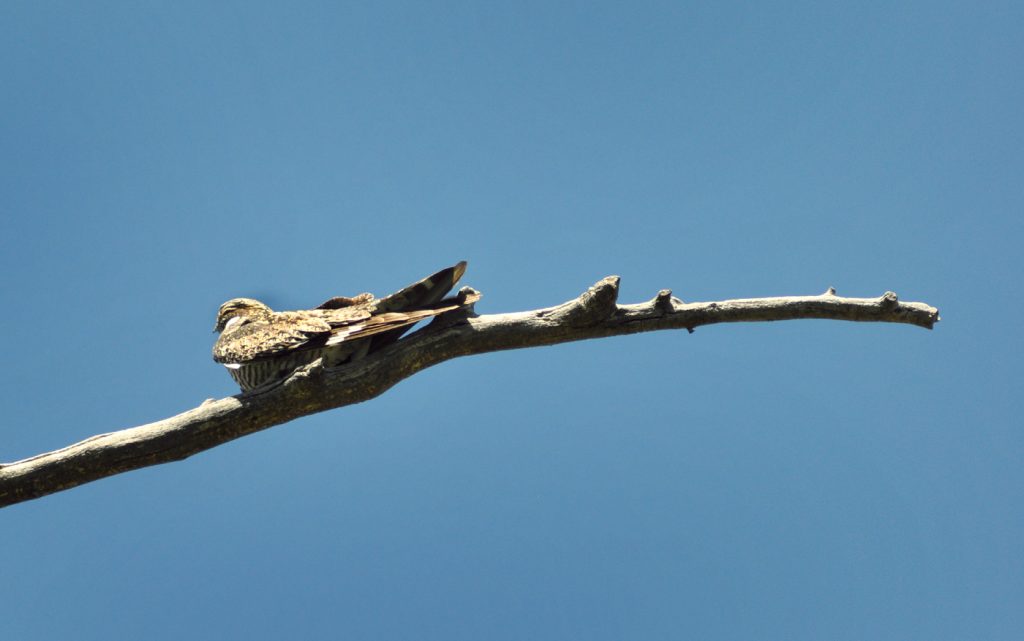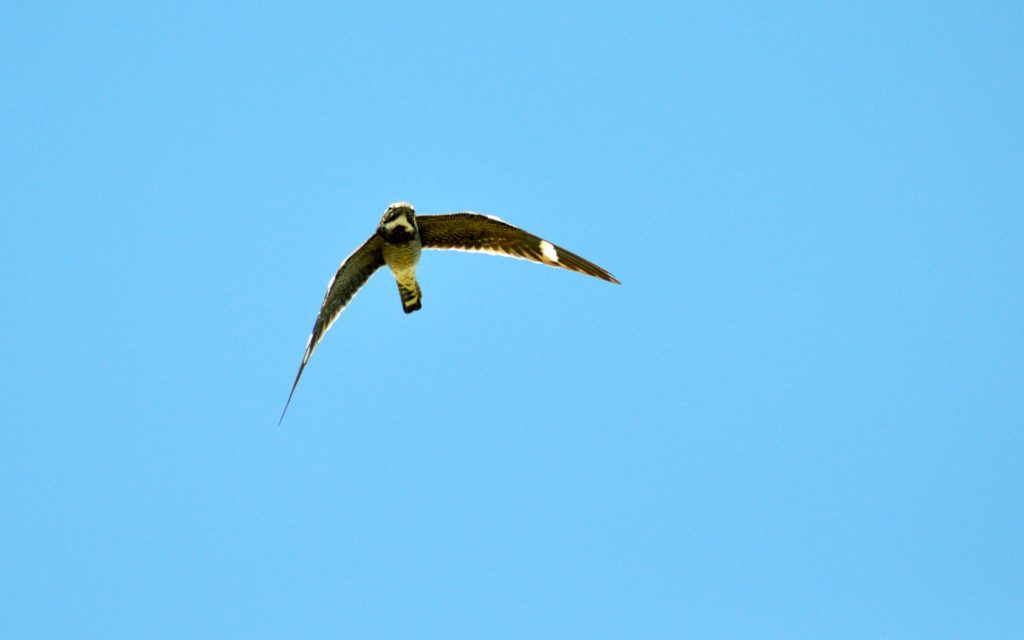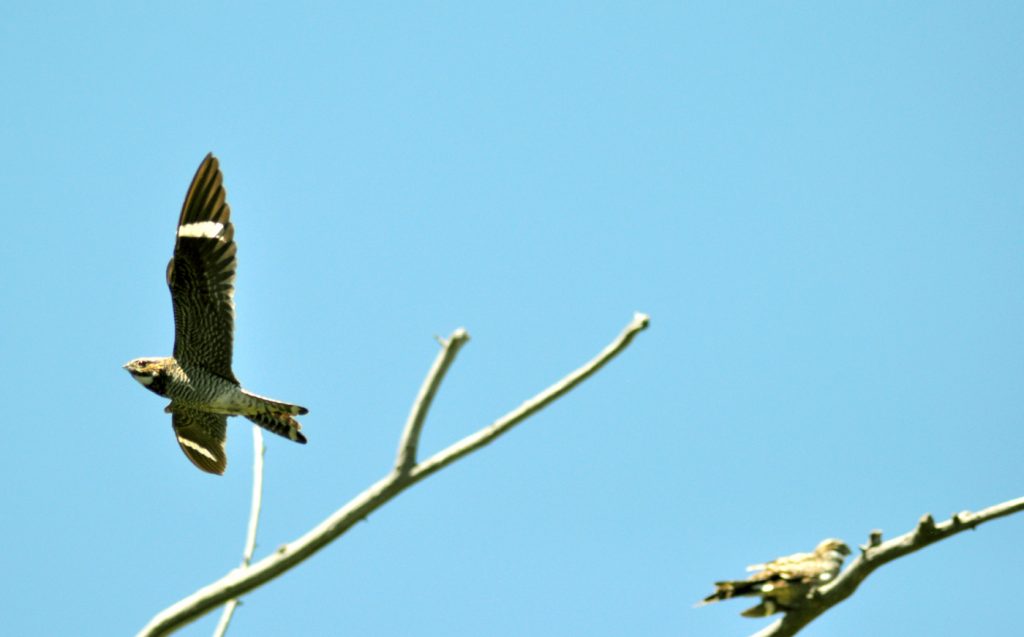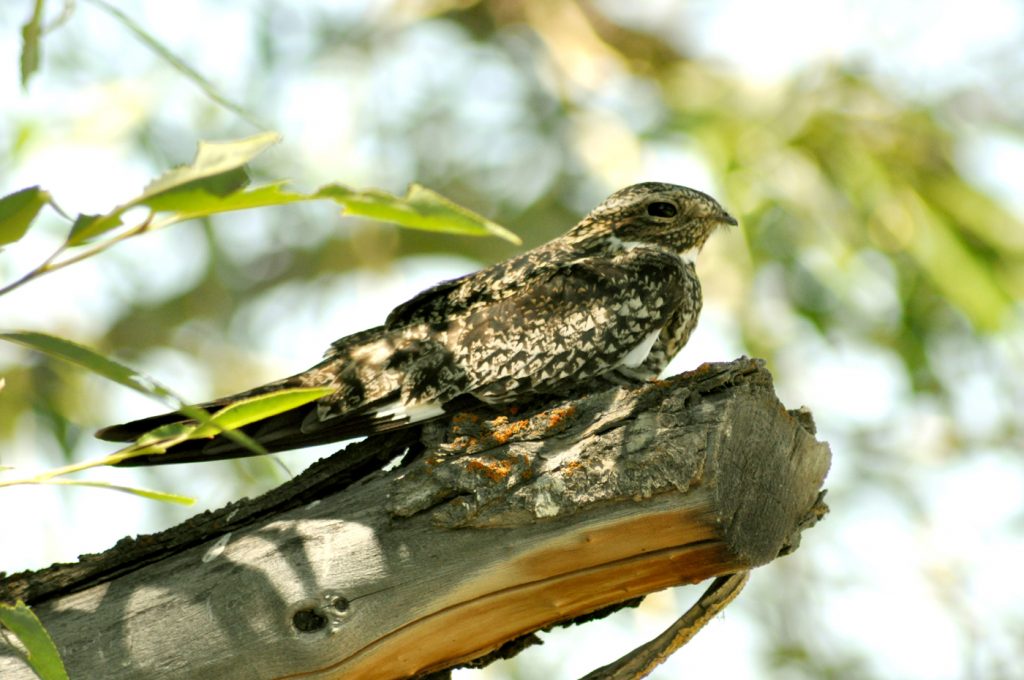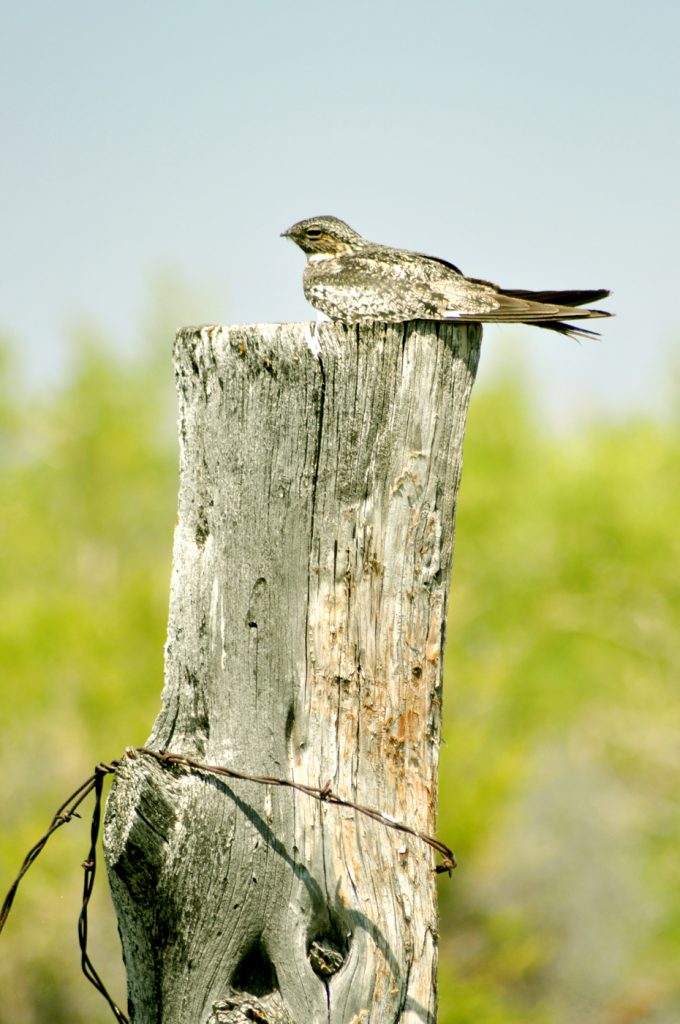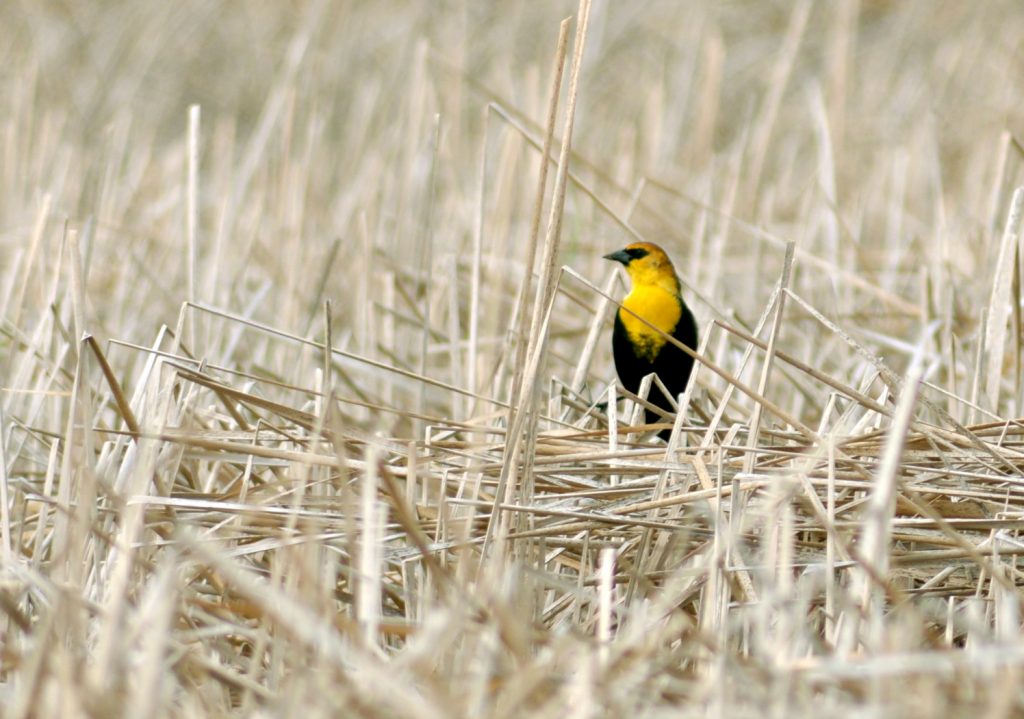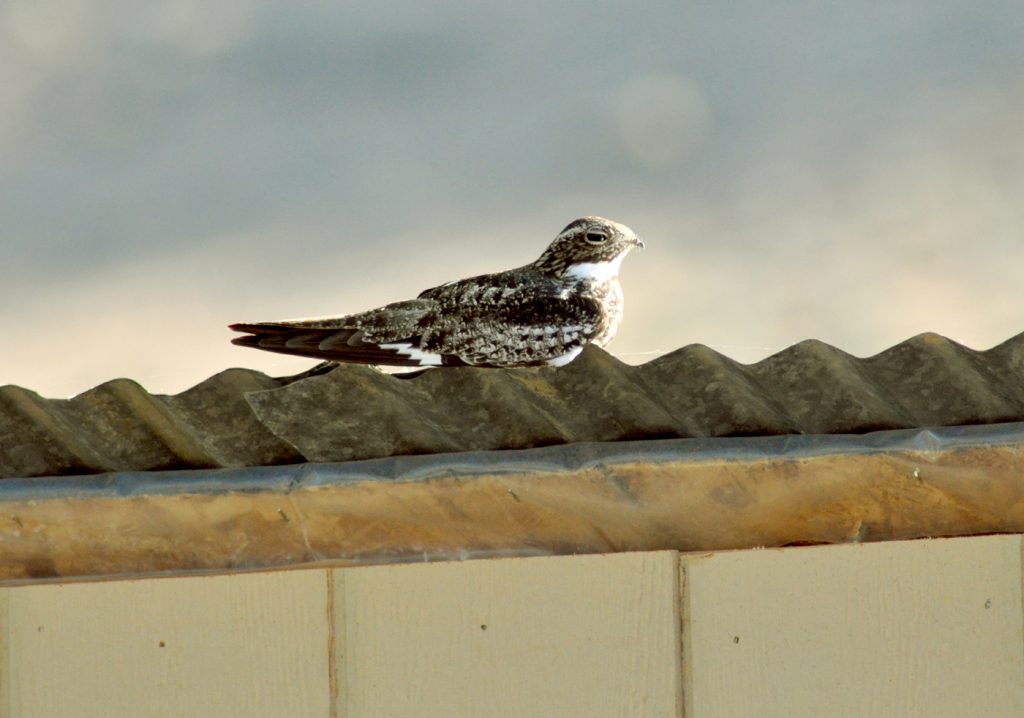
You’ve probably seen this unassuming bird with a quirky way of sitting
Nighthawks are everywhere in the high desert right now. They are a curious little bird in that they are more akin to a robin in size than a hawk. However, if you see them in action, you’ll see where the name comes from.
Li’l E and I were out in the garden. We looked up and there were 20 or 30 swooping and diving in the sky above us. Their tell-tale white stripes stood out from below with their wings making a wicked arc against the bright blue sky.
If you glance at the trees you’ll miss the them, but if you take a closer look, you’ll see them sitting quietly parallel to the tree branch. There coloring blends in with the wood. I’ve counted as many as five in one tree. They look like they’re sleeping but they are ever alert, and if you step too near, they’ll fly.
Habitat: They are found all over North America in open country such as forest clearings, prairies and farmland. They can also be found in cities and suburbs.
Feeding: They eat flying insects including beetles, moths and grasshoppers, which they catch in mid-flight.
Young: Both parents care for the young, which can fly around 21 days old.
Nesting: Apparently the male courtship is something to see. According to the Audubon Society, “his wingbeats become even more stiff and choppy as he circles and hovers high in the air, calling repeatedly; then he goes into a steep dive, with a rushing or ‘booming’ sound made by air passing through wing feathers at bottom of dive. Landing near female, he spreads his tail, rocks back and forth, and calls.” I don’t think I’ve ever witnessed that, but with the sheer number of them here, it’s only a matter of time and my attention span.
Conservation status: Also according to the Audubon Society, nighthawk numbers are seriously declining in many places because of changes in land use and overuse of pesticides. This is disheartening. Nighthawks are amazing to watch whether they are swooping through the sky or quietly sitting on a tree branch. I find them fascinating and a true symbol of summer out here in the high desert.
